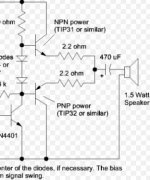So, I will readily admit that I'm one of those dirty young "Electrical Engineers" that really are just programmers trying to absorb electrical engineering on the job. One of the things that I'm having a hard time wrapping my head around is why PNP vs NPN exists. It seems like our plant has problems fairly regularly with people getting the wrong type of device, and even the EEs that went to school for it seem to just get ****ed trying to talk about the two types.
To me, it seems like both types are doing the same job in a way that doesn't make much of a difference. I understand PHYSICALLY there is a difference because the flow direction is reversed, but I don't understand the practical reason for the two different options to be necessary, beyond the fact that there are sinking AND sourcing inputs and outputs.
Does anyone want to take a crack at explaining why they are both necessary? Is this just a case of two different standards brought together by globalization and enough people using both that both standards stuck? Or are there practical advantages to each type?
To me, it seems like both types are doing the same job in a way that doesn't make much of a difference. I understand PHYSICALLY there is a difference because the flow direction is reversed, but I don't understand the practical reason for the two different options to be necessary, beyond the fact that there are sinking AND sourcing inputs and outputs.
Does anyone want to take a crack at explaining why they are both necessary? Is this just a case of two different standards brought together by globalization and enough people using both that both standards stuck? Or are there practical advantages to each type?








